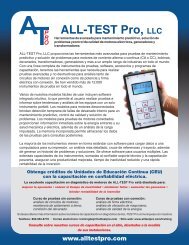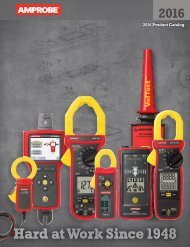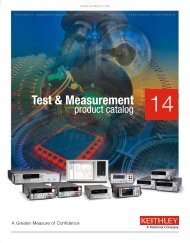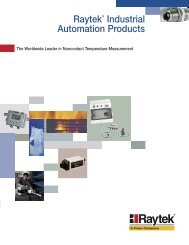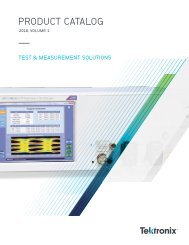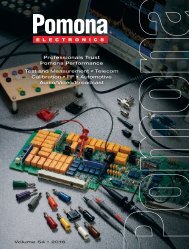Catalogo Fluke Calibration 2016
CEDE instrumentos de medición, distribuidor autorizado Fluke Calibration para todo México. Catalogo de instrumentos de calibración 2016.
CEDE instrumentos de medición, distribuidor autorizado Fluke Calibration para todo México. Catalogo de instrumentos de calibración 2016.
Create successful ePaper yourself
Turn your PDF publications into a flip-book with our unique Google optimized e-Paper software.
Gas flow calibration<br />
What is gas flow calibration?<br />
Gas flow calibration refers to the calibration of a<br />
flow sensing device such as a flow meter or flow<br />
controller by comparing its measurement against a<br />
flow measurement reference. Typically, the device,<br />
or unit under test (UUT), is pneumatically connected<br />
in series with the flow reference so they<br />
measure the same gas flow; then the indications of<br />
the two devices are compared.<br />
molbloc/molbox system components<br />
<strong>Fluke</strong> <strong>Calibration</strong>’s molbloc/molbox gas flow calibration<br />
system consists of molbloc flow elements<br />
that connect to a flow terminal (either molbox1+ or<br />
molbox RFM) so the terminal can use pressure and<br />
temperature measurements from around the flow<br />
element, combined with gas properties and prior<br />
molbloc calibration data, to determine and display<br />
the gas flow rate.<br />
Mass flow vs. volume flow<br />
A frequent topic of discussion and confusion surrounding<br />
gas flow measurement is that of mass<br />
flow versus volume flow. Flow meters and flow<br />
units used for flow measurements are used to<br />
measure and express either the amount of volume<br />
of gas or the amount of mass (number of moles or<br />
molecules) passing through the device. When performing<br />
a gas flow calibration, it is nearly always<br />
beneficial to use a mass flow reference measurement,<br />
because the mass flow rate stays constant<br />
throughout a flow system in steady state. Since<br />
gas is compressible, the volume flow rate varies at<br />
different locations in a flow system due to changes<br />
in density caused by changing temperature and<br />
pressure. <strong>Fluke</strong> <strong>Calibration</strong> molblocs are mass flow<br />
standards, which allow reliable comparisons to<br />
other flow devices. The molbox terminal is also<br />
able to calculate and express the flow rate in terms<br />
of volume flow at another point in the system to<br />
allow testing of volume-based devices.<br />
www.flukecal.com Gas Flow <strong>Calibration</strong> 37




